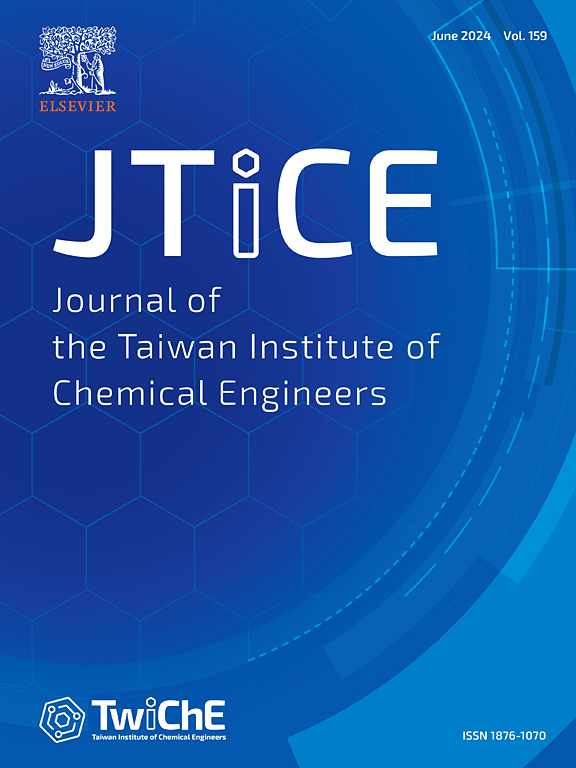A novel binary bismuth molybdate-perovskite type Strontium Niobate for efficient photocatalytic degradation of ciprofloxacin
IF 5.5
3区 工程技术
Q1 ENGINEERING, CHEMICAL
Journal of the Taiwan Institute of Chemical Engineers
Pub Date : 2025-02-01
DOI:10.1016/j.jtice.2024.105856
引用次数: 0
Abstract
Background
One effective strategy and popular topic to preserve ecosystems and prevent water contamination is the direct use of green solar energy to transform organic contaminants in industrial effluent into hazardous substances. Treatment of waste from pharmaceuticals is challenging due to its complexity and wide range of pollutants.
Methods
This study used a unique hydrothermal method to create a Bi2MoO6-Sr2Nb2O7 nanocatalyst. The photodegradation of Ciprofloxacin (CIP) in the presence of visible light was used to examine the photocatalytic performance of these materials. The obtained bare, composite photocatalysts were extensively characterized using a variety of physicochemical approaches. The structural and phase characteristics of the Bi2MoO6-Sr2Nb2O7nanohybrids were identified by XRD and FT-IR spectra. The binding and distribution of the produced catalyst's rod- and plate-like structure were visible in FESEM and HR-TEM images. The presence of Bi2MoO6 decreased the composite's optical absorbance and bandgap energy, which was examined using UV-DRS spectroscopy. The band gap value is reduced and shifted to the visible area by adding Bi2MoO6.
Significant Findings
The photodegradation of CIP, the Bi2MoO6-Sr2Nb2O7 catalyst demonstrated better photocatalytic activity; 96.3% of CIP was broken down under visible light. The Photoluminescence (PL) and transient photocurrent tests support the Bi2MoO6-Sr2Nb2O7 catalyst's improved photo-induced charge separation efficiency. According to the results of the scavenger test, h+ and •O2 were the key factors in the CIP degradation. Additionally, the Bi2MoO6-Sr2Nb2O7 catalyst showed exceptional reusability and durability in four sequential cycles. The Bi2MoO6-Sr2Nb2O7nanohybrids are expected to be used as photocatalysts for restoring the environment and converting light energy. This study presents an innovative method for creating a potent photocatalyst for pollutant degradation.

求助全文
约1分钟内获得全文
求助全文
来源期刊
CiteScore
9.10
自引率
14.00%
发文量
362
审稿时长
35 days
期刊介绍:
Journal of the Taiwan Institute of Chemical Engineers (formerly known as Journal of the Chinese Institute of Chemical Engineers) publishes original works, from fundamental principles to practical applications, in the broad field of chemical engineering with special focus on three aspects: Chemical and Biomolecular Science and Technology, Energy and Environmental Science and Technology, and Materials Science and Technology. Authors should choose for their manuscript an appropriate aspect section and a few related classifications when submitting to the journal online.

 求助内容:
求助内容: 应助结果提醒方式:
应助结果提醒方式:


